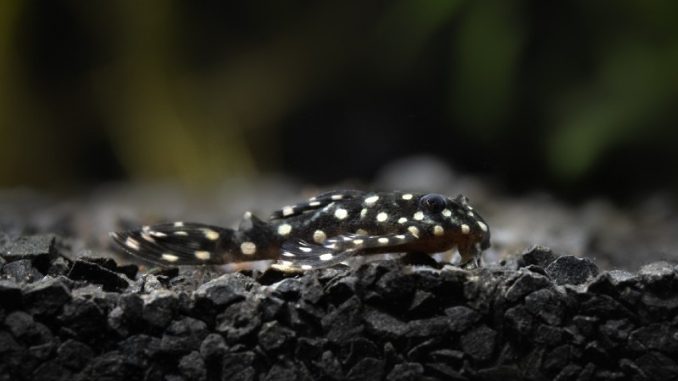
The blue phantom pleco is an attractive armored suckermouth fish. It is a member of the pleco and catfish families. It has a magnificent cobalt blue color, with interesting white dots.
It is related to the green phantom pleco, although they do have certain differences, apart from their obvious coloring.
In this article, we will give you all the information that you need for caring for a blue phantom pleco in your home aquarium.
TABLE OF CONTENTS
Blue Phantom Pleco Facts & Overview
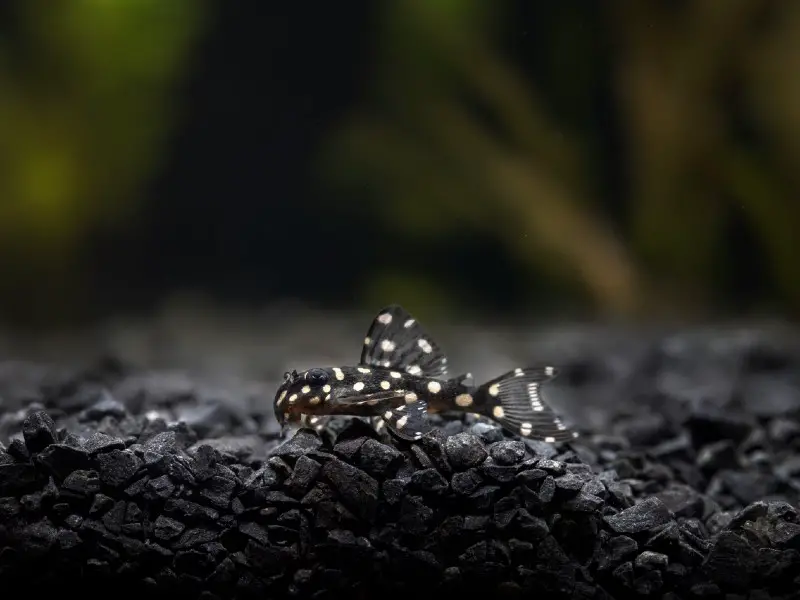
| Category | Rating |
| Care Level: | Moderate |
| Temperament: | Mildly aggressive |
| Color Form: | Cobalt blue with white spots |
| Lifespan: | Up tp 8 years |
| Size: | Up to 7.5 inches |
| Diet: | Omnivore |
| Family: | Loricariidae |
| Minimum Tank Size: | 10 gallons |
| Tank Set-Up: | Freshwater |
| Compatibility: | Most other freshwater fish |
The Blue Phantom Pleco is a freshwater fish. They do well in flowing water and enjoy having space to swim around.
They are suckers and love eating algae, which they will happily suck off the walls of their tank. But this should not be their sole source of nutrition. They need other food as well.
The Blue Phantom Pleco is sometimes seen as an aggressive fish, but this is not always accurate. It will only show aggression towards other plecos.
The Blue Phantom Pleco originated in Venezuela, where it is found in the Rio Orinoco River. When it is together with other species of fish, the Blue Phantom Pleco is a tranquil, calm fish.
They are fast growers and require a moderate amount of care. If it is well looked after, the blue Phantom Pleco can live for 6-8 years.
When buying a Blue Phantom Pleco for your home aquarium, it is advisable to buy from a reputable aquarium supplies store, in order to ensure that your fish is disease-free.
The Blue Phantom Pleco is not a cheap fish. You can expect to pay anywhere between $25 – $75, depending on the size of your specimen.
Typical Behavior
The Blue Phantom Pleco is generally a peaceful fish, as long as it is not paired with other plecos. It can live harmoniously with most other small freshwater fish
It will turn aggressive towards other plecos, and react in a hostile manner if another pleco is introduced into its tank. It will see the other pleco as a threat to its territory and will attack to try to defend itself.
The Blue Phantom Pleco enjoys a high level of activity. You will seldom see it lying inert in the water. It is a very fast swimmer and needs enough space to move freely around its tank.
Appearance
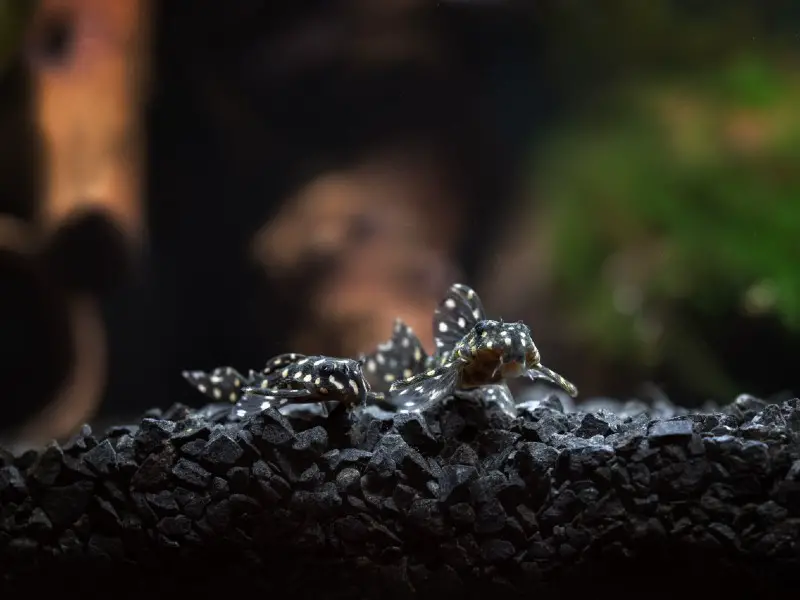
The Blue Phantom Pleco is a medium-sized fish. The biggest specimen may grow to a length of 7 ½ inches.
This fish has unique coloring. The main color is usually a shade of deep cobalt blue, although it can also be slightly lighter blue. It is also covered with interesting white dots.
The mouth of the Blue Phantom Pleco is designed for sucking. The front of the mouth protrudes, with big sucker-shaped lips.
These fish are known as ‘armored suckermouth’ fish, as they have a shimmery coating that looks like armor.
Habitat and tank conditions
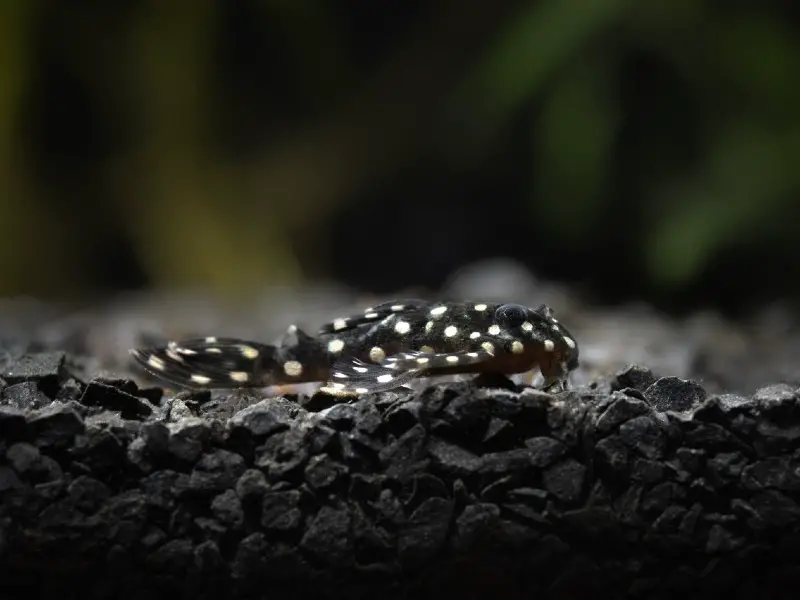
The Blue Phantom Pleco is a freshwater fish that prefers a stream-like environment. Being native to the turbulent waters of the Rio Orinoco River in Venezuela, they do best with a current flowing in the tank.
They enjoy cool to moderately warm water, with a temperature range of 70° – 78° Fahrenheit is the ideal temperature for them to remain healthy.
It is helpful to invest in a thermometer, and possibly also a water heater, to be sure that your aquarium water is at the appropriate temperature.
The blue Phantom Pleco does not like water with a high alkaline level. Ideally, the pH of the water should be maintained at between 6.0 -7.0.
What Size Aquarium Do They Need?
The average Blue Phantom Pleco is about 7 inches long, and it loves having lots of space to swim around. It is recommended to have a tank of a minimum of 30 gallons, but it is actually better to give it even more space. A 75 gallon tank or larger would be perfect.
Tank Mates
The Blue Phantom Pleco will get along with most other freshwater fish of a similar size and can be placed in an aquarium with an assortment of other species.
A word of caution; if there are numerous other fish in the tank, give your Blue Phantom Pleco somewhere to hide when he feels like being alone. They like to disappear and hide out under rocks or behind plants.
Avoid pairing them with another Blue Phantom Pleco. This will arouse an aggressive, defensive instinct in your fish.
Diet
Because the Blue Phantom Pleco is omnivorous, it enjoys both a vegetable and a meat-based diet.
It will feed off algae in the tank, and the amount of algae that is available will affect the frequency with which you should add supplementing food.
They can be given bloodworms, small pieces of brine shrimp, and assorted vegetable-based foods, and green plants.
Care
The Blue Phantom Pleco only requires a moderate level of care. While it is important to keep the tank clean, you should also allow some time between cleanings for algae to build up, as it enjoys feeding off the algae.
Breeding
Obviously, in order for them to breed, you need both males and females in the tank. The male is usually longer and thinner, while the female has a more rounded belly.
You should only have one male in the tank, paired with a few females. If there is more than one male, they may turn aggressive towards each other.
Is The Blue Phantom Pleco Suitable For Your Aquarium?
If you have other medium-sized freshwater fish in your aquarium, you can add a Blue Phantom Pleco to the community quite successfully.
As long as the tank size is adequate, and all the water parameters are suitable, your blue Phantom Pleco should integrate well and swim around quite happily in your tank.

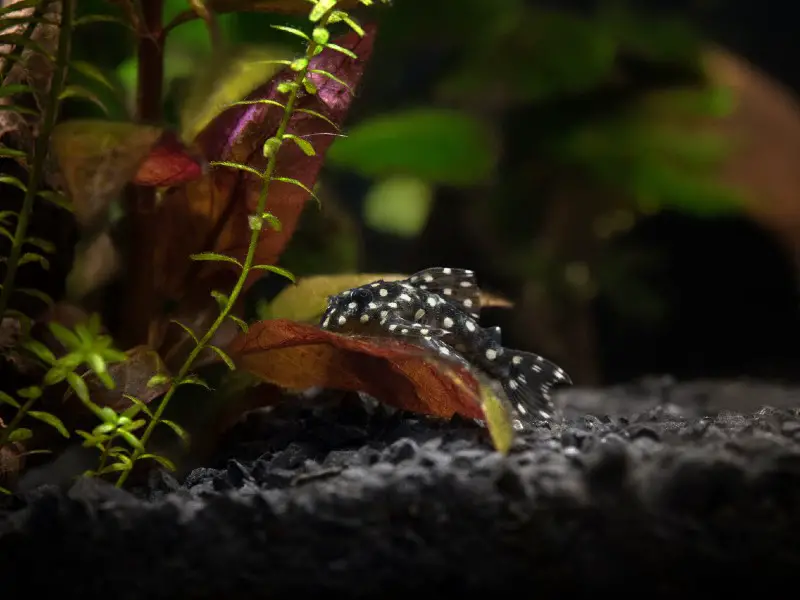
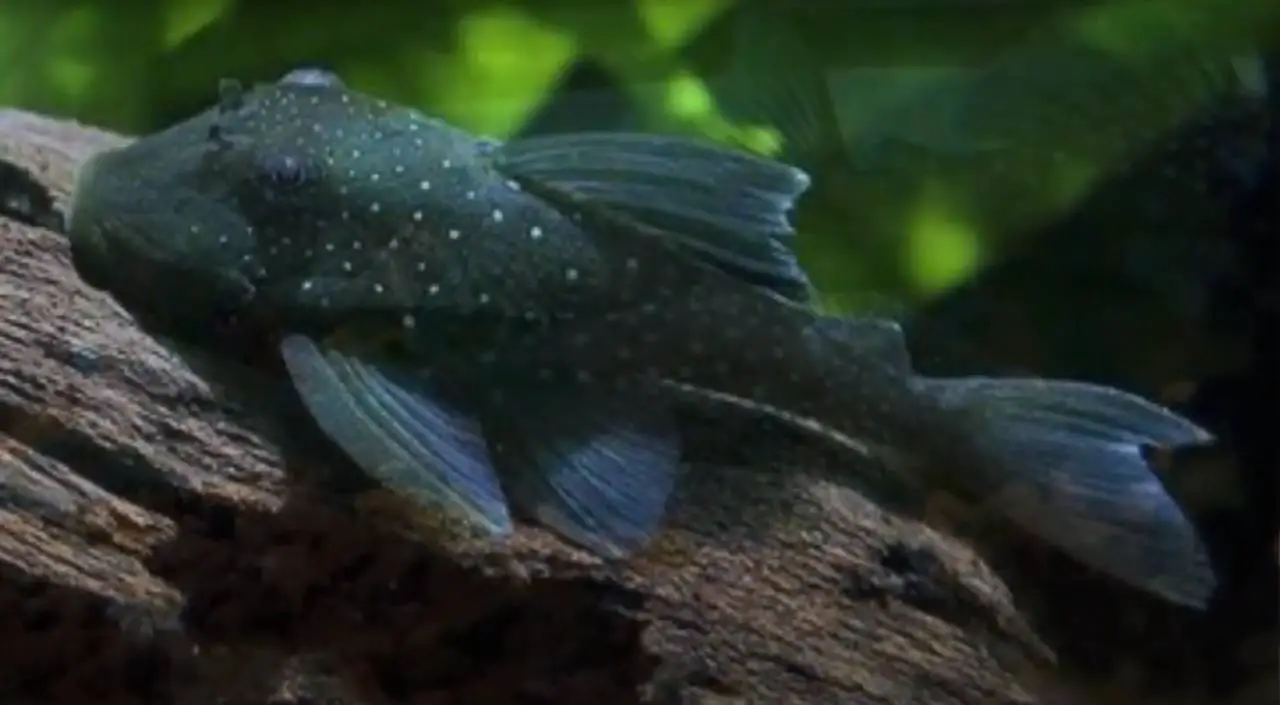
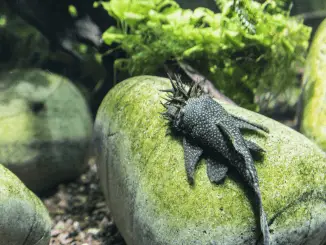
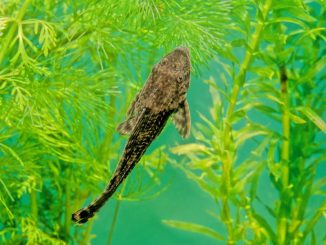
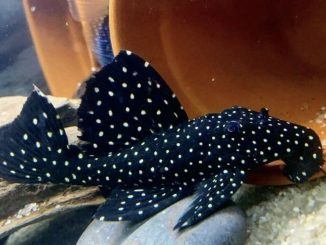
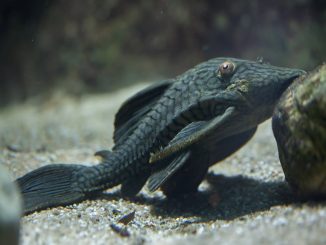
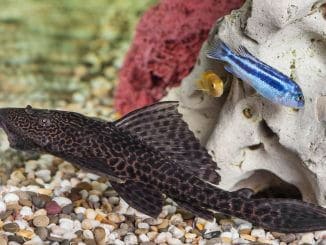
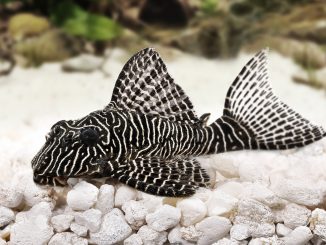
Dear Rob,
As I don’t live in an English-speaking country, or in the capital, it would be great if you could always supply the precise Latin name of the fish about which you write so knowledgeably and helpfully.
Otherwise great to receive an email again after a long silence.